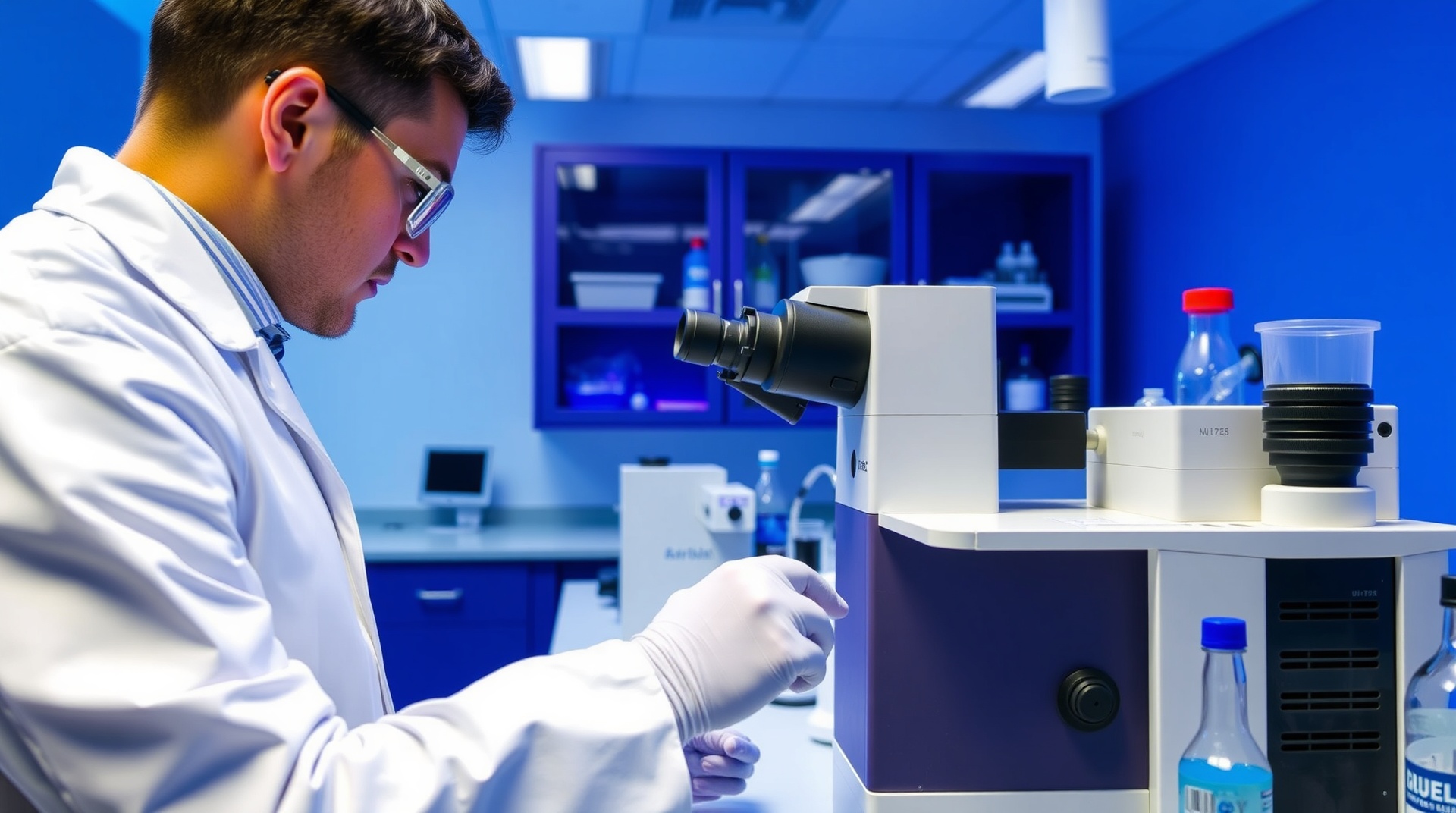
SpectrophotometerCalculation Tool
Calculate concentration using Beer-Lambert Law with absorbance, path length, and extinction coefficient for analytical chemistry applications.
How to Use
- 1Enter the Absorbance (A) value measured by your spectrophotometer
- 2Input the Path Length (l) in centimeters (usually 1 cm for standard cuvettes)
- 3Enter the Extinction Coefficient (ε) in L/mol·cm for your compound
- 4Click "Calculate Concentration" to get the result in mol/L
Beer-Lambert Law Formula
The Beer-Lambert Law
A = ε × c × l
c = A / (ε × l)
Where:
- • A = Absorbance (unitless)
- • ε = Extinction coefficient (L/mol·cm)
- • c = Concentration (mol/L)
- • l = Path length (cm)
Example Calculation
Given: A = 0.5, ε = 1000 L/mol·cm, l = 1 cm
Solution: c = 0.5 / (1000 × 1) = 0.0005 mol/L
Result: The concentration is 5.0 × 10⁻⁴ mol/L
Beer-Lambert Law Visualization
Diagram: Beer-Lambert Law visualization showing light attenuation through a sample with the fundamental formula A = ε × c × l.
Key Principles:
- • Light intensity decreases exponentially
- • Absorbance is proportional to concentration
- • Path length affects total absorption
- • Extinction coefficient is substance-specific
Applications:
- • Quantitative analysis
- • Protein concentration
- • DNA/RNA quantification
- • Chemical kinetics studies
Absorbance vs Concentration Relationship
Graph: Linear relationship between absorbance and concentration showing Beer-Lambert Law validity at low concentrations.
Linear Region:
- • Direct proportionality (A ∝ c)
- • Slope = ε × l
- • Intercept = 0 (ideal case)
- • Valid for dilute solutions
Deviations:
- • High concentrations (>0.1 M)
- • Molecular interactions
- • Stray light effects
- • Instrument limitations
Understanding Spectrophotometry
Spectrophotometry is a fundamental analytical technique that measures the amount of light absorbed by a sample at specific wavelengths. The Beer-Lambert Law provides the mathematical foundation for quantitative analysis, establishing the relationship between absorbance and concentration. This principle is widely used in analytical chemistry, biochemistry, and environmental monitoring.
The extinction coefficient (ε) is a critical parameter that determines how strongly a substance absorbs light at a particular wavelength. It's an intrinsic property of the molecule and depends on the electronic structure and molecular environment. Understanding extinction coefficients is essential for accurate concentration calculations and method development.
Modern spectrophotometers use various light sources, including deuterium lamps for UV measurements and tungsten lamps for visible light. The choice of wavelength depends on the analyte's absorption characteristics, and optimal wavelengths typically correspond to absorption maxima where sensitivity is highest and measurements are most precise.
Common applications include protein quantification at 280 nm, DNA measurements at 260 nm, and enzyme activity assays using chromogenic substrates. The technique is also essential in pharmaceutical analysis, environmental monitoring, and quality control across various industries.
Absorbance vs Transmittance
Absorbance (A)
- • Measures light absorbed by sample
- • Logarithmic scale (0 to ∞)
- • Directly proportional to concentration
- • A = -log(T) or A = log(I₀/I)
- • Ideal for Beer-Lambert calculations
Transmittance (T)
- • Measures light passing through sample
- • Linear scale (0 to 1 or 0% to 100%)
- • Exponentially related to concentration
- • T = I/I₀ (transmitted/incident intensity)
- • More intuitive but non-linear
Relationship
Conversion formulas:
A = -log(T) = log(1/T) = log(I₀/I)
T = 10⁻ᴬ = I/I₀
Example: If T = 0.1 (10%), then A = -log(0.1) = 1.0
Common Laboratory Applications
Analytical Chemistry
- • Metal ion analysis
- • Pharmaceutical quantification
- • Environmental monitoring
- • Food and beverage analysis
Life Sciences
- • Protein concentration (A280)
- • DNA/RNA quantification (A260)
- • Enzyme activity assays
- • Cell culture monitoring
Industrial Applications
Quality Control
Manufacturing processes, product consistency, contamination detection
Environmental
Water quality, pollutant monitoring, regulatory compliance
Clinical
Blood analysis, drug levels, diagnostic assays
Related Calculators
Calculate Concentration
User Reviews
Based on 3 reviews
Dr. Michael Thompson
2 weeks agoExcellent tool for Beer-Lambert calculations! Perfect for our analytical chemistry lab. The interface is intuitive and results are accurate.
Sarah Martinez
3 weeks agoGreat for spectrophotometry work. Really helps with quick concentration calculations during experiments. Highly recommended!
Prof. David Lee
1 month agoSolid calculator for teaching Beer-Lambert law. Students find it very helpful for understanding the relationship between absorbance and concentration.
Frequently Asked Questions
Need More Biology Tools?
Explore our comprehensive collection of biology calculators
Explore More Biology Tools